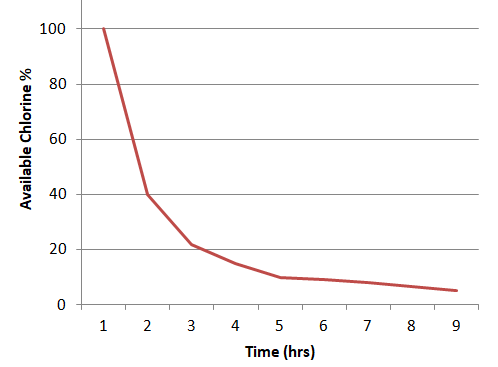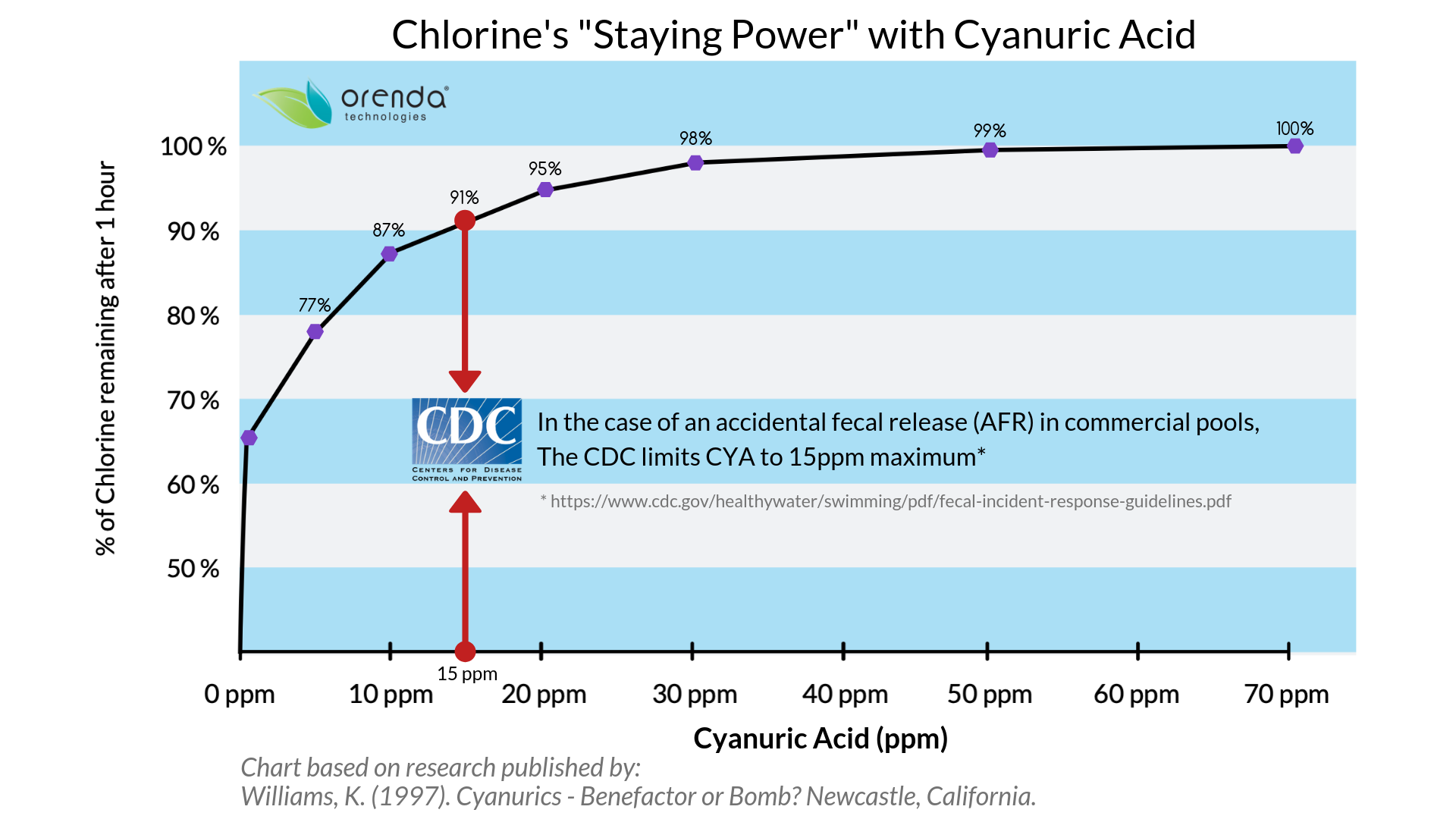Navigating the complexities of pool chemistry can be daunting for property managers overseeing facilities like apartments, HOAs, and resorts. Amidst the array of chemicals needed to keep pools pristine, cyanuric acid plays a pivotal role. It's the silent guardian that ensures chlorine, the pool's main disinfectant, remains effective under the sun's relentless gaze.
As a property manager, lifeguard, or maintenance expert, you know the importance of a well-maintained pool. But do you know about the silent guardian of your pool's health - cyanuric acid? Often overlooked, this stabilizer plays a crucial role in keeping your pool safe and sparkling.
Many Names.........Same Thing |
|---|
Cyanuric Acid |
Isocyanuric Acid |
Tricyanic Acid |
Cyanuric Acid Pool Stabilizer |
Pool Conditioner |
CYA |
Chlorine Stabilizer |
What is Stabilizer?
In the world of pool maintenance, stabilizers are like sunscreen for your pool. They protect the chlorine from the harsh effects of sunlight. Cyanuric acid, specifically, is a stabilizer used predominantly in outdoor pools. It shields chlorine, the primary disinfectant in pool water, from being rapidly broken down by ultraviolet (UV) rays. This protection is vital because, without it, the chlorine would quickly degrade, leaving your pool defenseless against bacteria and algae.
How Does It Work?
Cyanuric acid works by forming a protective bond around chlorine molecules, effectively creating a shield against the sun's UV rays. This process doesn't remove or deactivate the chlorine; instead, it extends its life, ensuring that the chlorine remains effective longer. This means less frequent chlorine additions, saving time and resources while maintaining a consistent level of pool hygiene.

How Much or Little Should I Use?
Balancing cyanuric acid levels is key. The ideal target range is typically 30 parts per million (ppm). Too little, and the chlorine will rapidly degrade; too much, and it could reduce the effectiveness of chlorine and lead to cloudy water or even health issues. It's a delicate balance that requires regular monitoring and adjustment. Don't miss the bigger picture of pool chemistry - understanding the role of calcium hardness is equally vital for a balanced and safe pool.
The chart below shows that at 30 ppm yu get 98% effectiveness of the benefits of chlorine protection. Levels much higher significantly slow down the chlorines disinfection powers WITHOUT the adding much benefit to chlorine preservation

How to Add CYA to Your Pool
Cyanuric acid (CYA), essential for protecting chlorine in your pool from the sun's UV rays, is commonly added in granular form. Here's how to do it correctly:
Measure the Required Amount: Use a reliable pool testing kit to determine the current CYA level in your pool. Then, calculate the required amount to reach the ideal range of 30 ppm.
Dissolve the Granules: To prevent damage to your pool’s surfaces, it's crucial to dissolve the granular CYA properly. This can be done by adding the granules to a bucket of warm water and stirring until completely dissolved.
Add to the Pool: Pour the dissolved CYA solution into the pool, preferably near the return jets, to ensure even distribution throughout the pool.
Circulate the Water: Run your pool's pump for several hours to circulate the water and allow the CYA to distribute evenly.
Now, let's compare the granular and liquid forms of CYA:
Feature | Granular CYA | Liquid CYA |
|---|---|---|
Ease of Use | Requires dissolving in water before adding | Easy to add directly to the pool |
Cost | Generally more cost-effective | Tends to be more expensive |
Availability | Widely available in pool supply stores | Less commonly found |
Shelf Life | Long shelf life if kept dry | Limited shelf life after opening |
Precision in Dosing | Easier to measure specific amounts | Can be challenging to dose accurately |
Impact on Water Clarity | Can cloud water temporarily | Less likely to cloud water |
Time to Dissolve | Takes time to dissolve completely | Dissolves instantly |
Conclusion: Choosing between granular and liquid CYA depends on your preference, budget, and the specific needs of your pool. While granular CYA is more traditional and cost-effective, liquid CYA offers convenience and immediate action. Whichever form you choose, remember that maintaining the correct CYA level is a critical aspect of pool care.
FAQ
1. Is cyanuric acid harmful to humans?
Cyanuric acid is generally considered to be safe for humans when used properly. However, prolonged exposure or ingestion of large amounts can have harmful effects. It is recommended to follow proper handling and safety precautions.
2. Is it safe to swim in a pool with high cyanuric acid?
Swimming in a pool with high levels of cyanuric acid is generally considered to be safe for short periods of time. However, excessive levels may affect water quality and chlorine effectiveness. Regular monitoring and maintenance are important to ensure the safety and comfort of swimmers.
3. Is cyanuric acid the same as baking soda?
No, cyanuric acid is not the same as baking soda. They are different chemical compounds with distinct characteristics and uses. Baking soda (sodium bicarbonate) is commonly used as a household cleaning agent and in cooking, while cyanuric acid is primarily used as a stabilizer for chlorine in swimming pools.
4. What is cyanuric acid used for?
Cyanuric acid is commonly used as a pool stabilizer or conditioner. It helps to protect chlorine from degradation caused by sunlight, thereby prolonging its effectiveness in disinfecting pool water. It is an essential component to maintain proper chlorine levels in outdoor pools.
5. Can cyanuric acid make you sick?
When used correctly, cyanuric acid is generally not harmful to human health. However, excessive exposure or ingestion can lead to negative health effects such as gastrointestinal discomfort, skin irritation, or eye irritation. It is important to handle and use cyanuric acid according to recommended guidelines.
6. How toxic is cyanuric acid?
Cyanuric acid is considered to have low acute toxicity to humans. However, it can be moderately toxic if ingested in large quantities. It is important to handle and store cyanuric acid safely, keeping it out of reach of children and pets.
7. What kills cyanuric acid in pool?
There is no specific chemical that can effectively "kill" cyanuric acid in a pool. However, regularly diluting the water through backwashing, draining, and refilling can help reduce cyanuric acid levels over time. It is recommended to consult with a pool professional for proper management of cyanuric acid levels.
8. Does shock lower cyanuric acid?
No, shock treatments (such as chlorine shock) do not lower cyanuric acid levels in a pool. They primarily help eliminate organic contaminants and sanitize the water. To lower cyanuric acid levels, dilution through water replacement is necessary.
9. Does shock have cyanuric acid in it?
No, shock treatments typically do not contain cyanuric acid. They are formulated to provide a high concentration of chlorine or other sanitizing agents. Cyanuric acid is usually added separately to stabilize the chlorine and protect it from degradation by sunlight.
In Conclusion Cyanuric acid is an unsung hero in pool maintenance. By understanding its role and maintaining the right levels, you ensure a safer, cleaner pool experience for everyone. Remember, pool care is a comprehensive task. It's not just about cyanuric acid; it involves understanding the 3 C's of pool care and staying updated with new regulations to ensure your pool meets all safety standards.
For more insights on pool maintenance and management, be sure to explore our other resources, designed to empower every property manager and maintenance professional.


